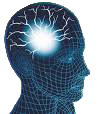Happy New Year.
by admin
As its the new year I thought I’d give you a brief summary of what has happened in headache research in 2016 in the medical world.
A large research program reanalyzed the results of 20,000 patients included over a number of different randomized trials, to compare triptans with placebo and other treatments. The rate of being pain-free after triptan intake was only somewhere between 18% and 50%. Although this seems rather unimpressive, the triptans were still superior in comparison with other migraine medications.
Clearly better medications need to be developed (especially for patients who have contraindications for triptans or for whom side-effects are unacceptable)
The most promising new drugs in the pipeline for migraine and cluster headache has been in the use of antibodies against calcitonin gene-related peptides. When the results of phase 2 trials in episodic migraine and chronic migraine were published the responder rate, defined as a reduction of migraine frequency of at least 50%, was achieved by one half of the patients.
Importantly the tolerability so far appears to be excellent. and there have basically been almost no side effects. All of these drugs are now in phase 3 randomized trials for episodic and chronic migraine, & also for episodic and chronic cluster headache. Hopefully next year, further information will be published to confirm how effective and well tolerated these new drugs are.
Another interesting study investigated the optimal duration of botulinum toxin for the treatment for chronic migraine. Investigators treated patients for 1 year and then stopped the treatment. It turned out that about one half of the patients did so well that they no longer needed botulinum toxin, whereas the other half deteriorated again and treatment had to be continued.
(nb there has also been some data showing that botulinum toxin might also be effective in patients with trigeminal neuralgia. If confirmed by further trials this has the potential to help sufferers who cannot use or tolerate the usual medication)
There was a new published paper on closure of patent foramen ovale (PFO) in patients who have migraine and migraine with aura, suggesting it had little, if any, benefits.
There was also an interesting but small study in cluster headache to treat acute attacks with a civamide nasal spray, which seemed to be effective. A phase 3 trial is now ongoing.
Further trials have had positive results for transcutaneous stimulation of the vagus nerve in cluster headache.This method is safe and well tolerated, and is now being investigated in frequent episodic migraine, chronic migraine, and cluster headache, compared with sham stimulation.
Comments
Leave a Reply

